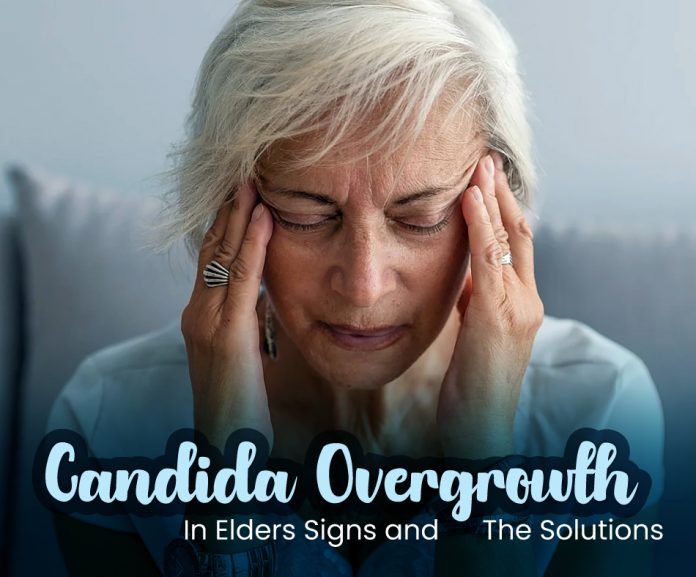What is Candida?
One of the commonest types of yeast infections is Candida albicans. It mostly affects the intestinal tract, vagina, and mouth. In many cases, it can affect mucous membranes including the skin. In a well-functioning immune system, chances of a yeast infection are rare.
However, those with an impaired immune have a higher likelihood of the candida infection migrating to other parts of the body increasing brain, heart, and bloodstream. If that happens, the symptoms can be serious. The condition is called invasive candidiasis.
We recommend you get your hands on a guide by Eric Bakker to know about candida in detail.
Common Causes of Candida Overgrowth
Broad-Spectrum Antibiotics
Antibiotics are, no doubt, necessary if the body is fighting off a serious infection. They help to kill off the bad bacteria residing in the system. However, the problem with medications and strong antibiotics is they don’t just kill the bad bacteria.
They also kill the good ones. Over prolonged antibiotic usage, your gut becomes a breeding ground for harmful pathogens, viruses, and bacteria including candida.
Oral Contraceptives
Birth control or oral contraceptives don’t cause candida overgrowth in and of itself. They don’t directly contribute to a yeast infection.
However, when you throw into the mix a poor diet high in carbs, refined sugars, and a series of antibiotics, the whole thing can majorly affect the immune system. Eventually, all of it could create the perfect space for candida infection.
Diabetes
In both types of Diabetes, Type 1 and Type 2, sugar levels are higher than a regular individual in mucous membranes and mouth. Since candida is a kind of yeast that feeds on sugars, it’s a natural presumption that a diabetic person has a higher chance of developing a candida infection.
Chronic Stress
Chronic stress is well studied to negatively impact the immune system. It’s one of the plausible reasons that could increase the chances of a person getting the infection. Some studies have also established a close link between vaginal yeast infections and stress.
Signs of Candida Overgrowth?
- Oral Thrush
- Chronic Fatigue
- Brain Fog
- Digestive Issues
- Joint Pain
- Skin & Nail Fungal Infections
- Autoimmune Diseases
- Vaginal Infections
Solutions For Treating Candida Overgrowth
Starve the Yeast
The important step and an obvious one to treating candida successfully is – cutting out foods that feed the yeast so that the candida cells can starve.
That includes cutting out the beer, vinegar, mushrooms, wine, refined carbs, sugar, and processed food. Other than that, it’s a good strategy to limit the intake of healthy carbs like grains, legumes, and starchy vegetables to a cup/day. Also, try to limit fruits to a single serving. Unfortunately, several good carbs can feed the yeast as well.
Do the Candida Cleanse
You can start a candida cleanse by incorporating a veggie broth made with garlic, onions, kale, celery, pure water, and sea salt. Simmer and strain. Get rid of the veggies. You can refrigerate the broth and eat it at your convenience.
It’s good to keep sipping the warm broth throughout the day. Also, make sure to drink a LOT of water to keep expelling toxins out of your system. You can repeat this cleanse every couple of weeks to give your system a break.
The Candida Diet
A candida diet focuses on both inclusion and elimination. The first step, we already talked about, focuses on eliminating certain foods from the diet that contribute to candida overgrowth. That includes sugar, refined carbs, alcohol, etc.
Step 2 focuses on replacing those foods with vegetables like sweet potatoes, carrots, kale, asparagus, spinach, etc. You should also focus on warming fall veggies that are good for the spleen. This includes mung beans, peas, yams, lentils, adzuki beans, kidney beans, corn, butternut squash, zucchini, rutabaga, and pumpkin. All of these are excellent sources of healthy carbs that will satiate your desire for sweet stuff.
Next, we need to talk about grains. It’s safe to include a few ones like barley, quinoa, sorghum, amaranth, and teff. All of these are great for a damp gut. Stick with a serving per day.
Include Supplements and Essential Oils
Research tells us that C. Albicans is often resistant to two of the most prescribed antifungal medications – itraconazole and fluconazole.
That means you will have to incorporate alternative and more holistic ways to treat candida overgrowth. These essential oils and supplements can help you with that –
- Coconut carries powerful antimicrobial properties which means it’s well equipped to fight candida. It also carries caprylic and lauric acid which further kills off harmful bacteria no matter if you ingest it or apply it.
- Prescription medications can wreak havoc on your liver. To cleanse it, you can use milk thistle.
- Vitamin C is excellent for your adrenal health. It also helps to strengthen your immune system.
- Myrrh, oregano, and clove oil are highly effective in killing off all kinds of fungi and parasites including candida.
Add High-potency Probiotic
High-quality healthy probiotics are highly effective in killing off candida. To that end, you should get a cultured dairy product such as goat milk kefir.
Other excellent additions are sauerkraut, kimchi, and unsweetened cranberry juice. They create a more acidic environment in which candida cannot survive.
Fermented foods also contain live microflora that protects the intestines. Fermented foods have been studied to show remarkable signs of improvement in the immune system.
Bottom Line
There’s no reason you have to live with candida. With pharmaceutical aid and a combination of home remedies, you can fight off this infection successfully.























